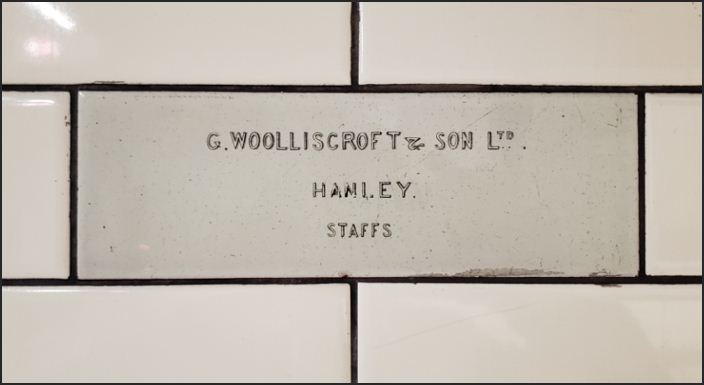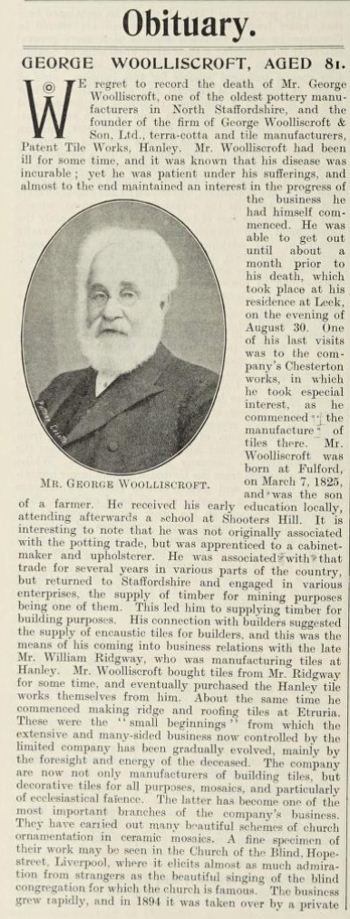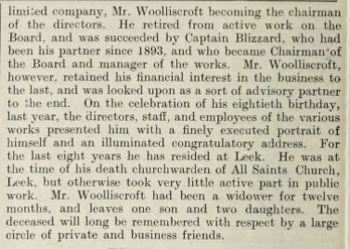![]()
|
George Woolliscroft & Son (Ltd) |
Location and period of operation:
|
G
Woolliscroft |
Hanley |
c.1880 |
2000 |
Manufacturer of roof, wall
and floor tiles at the Patent
Tile Works, Hanley,
Stoke-on-Trent, England.
|
- click for more on Woolliscroft & Son -

George Wooliscroft & Son
letter head (pre 1894)

G Wooliscroft & Son Ltd
Hanley
Staffs
Makers tile at Kentish Town, London underground station


Woolliscroft supplied tiles to
a number of the London underground stations
photos courtesy: Roger van Goethem
|
Obituary George Wooliscroft, aged 81. We regret to record the death of Mr. George Woolliscroft, one of the oldest pottery manufacturers in North Staffordshire, and the founder of the firm of George Woolliscroft & Son, Ltd., terra-cotta and tile manufacturers, Patent Tile Works, Hanley. Mr. Woolliscroft had been ill for some time, and it was known that his disease was incurable; yet he was patient under his sufferings, and almost to the end maintained an interest in the progress of the business he had himself commenced. He was able to get out until about a month prior to his death, which took place at his residence at Leek, on the evening of August 30. Mr. Woolliscroft was born at Fulford, on March 7, 1825 and was the son of a farmer. These were the "small beginnings" from which the extensive and many-sided business now controlled by the limited company has been gradually evolved, mainly by the foresight and energy of the deceased. The company are now not only manufacturers of building tiles, but decorative tiles for all purposes, mosaics, and particularly of ecclesiastical faience. The latter has become one of the most important branches of the company’s business. They have carried out many beautiful schemes of church ornamentation in ceramic mosaics. A fine specimen of their work may be seen in the Church of the Blind, Hope-street, Liverpool, where it elicits almost as much admiration from strangers as the beautiful singing of the blind congregation for which the church is famous. The business grew rapidly, and in 1894 it was taken over by a private limited company, Mr. Woolliscroft becoming the chairman of the directors. He retired from active work on the Board, and was succeeded by Captain Blizzard, who had been his partner since 1893, and who became Chairman of the Board and manager of the works. Mr. Woolliscroft, however, retained his financial interest in the business to the last, and was looked upon as a sort of advisory partner to the end. On the celebration of his eightieth birthday, last year, the directors, staff, and employees of the various works presented him with a finely executed portrait of himself and an illuminated congratulatory address. For the last eight years he has resided at Leek. He was at the time of his death churchwarden of All Saints Church, Leek, but otherwise took very little active part in public work. Mr. Woolliscroft had been a widower for twelve months, and leaves one son and two daughters. The deceased will long be remembered with respect by a large circle of private and business friends. |
  |
The Pottery Gazette - 1 October 1906
Questions, comments, contributions? email: Steve Birks